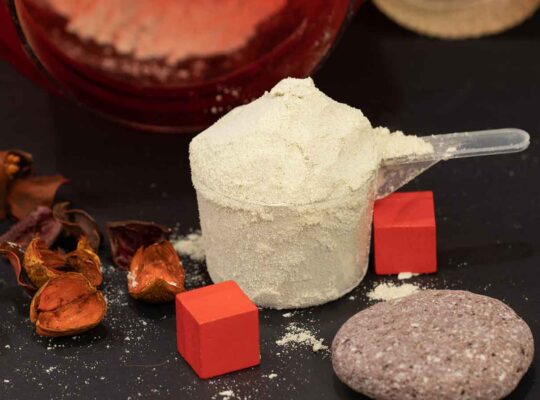Are You Noticing Changes in Your Skin? Here’s How to Adjust Your Daily Routine for Aging Skin
As the years pass, have you started to notice fine lines, wrinkles, or a change in your skin’s texture? Don’t worry, you’re not alone. Aging is a natural process, and your skin will inevitably change over time. But the good news is that you can take steps to adjust your daily routine to keep your skin looking and feeling its best. This blog will guide you through simple yet effective tweaks you can make to your daily skincare routine to combat aging and keep your skin glowing.
Understanding Aging Skin
Aging skin goes through several changes. Starting in your mid-20s, your skin begins to lose about 1% of its collagen each year. Collagen is the protein that keeps your skin firm and elastic, so as it decreases, you may notice your skin becoming thinner and more prone to wrinkles. Additionally, your skin’s natural oil production slows down, leading to dryness and a loss of that youthful glow.
Why Adjust Your Routine?
Why should you change your routine as your skin ages? Simple—what worked for your skin in your 20s might not be as effective in your 40s, 50s, and beyond. Your skin’s needs evolve, and so should your routine. By making targeted adjustments, you can help your skin stay hydrated, protected, and youthful.
Top Anti-Aging Skincare Routine Tweaks
Here’s a breakdown of what you should consider when adjusting your daily routine:
1. Gentle Cleansing: Start with the Basics
Your cleanser is the foundation of your anti-aging skincare routine. As your skin ages, it becomes more sensitive and prone to dryness. Using a gentle, hydrating cleanser can remove dirt and makeup without stripping your skin of essential oils. Look for cleansers that contain ingredients like hyaluronic acid or glycerin to boost moisture.
Example Cleanser Routine:
| Time of Day | Product | Key Ingredients | Purpose |
|---|---|---|---|
| Morning | Gentle Cleanser | Hyaluronic Acid | Hydration and Cleansing |
| Evening | Hydrating Cleanser | Glycerin | Removes Impurities Gently |
2. Moisturize
Hydration is crucial for aging skin. As your skin loses its natural oils, it’s essential to replenish moisture to keep it looking plump and smooth. Use a moisturizer that’s rich in hyaluronic acid and ceramides. These ingredients help to retain moisture and strengthen your skin’s barrier, reducing the appearance of fine lines.
Pro Tip: Apply your moisturizer immediately after cleansing while your skin is still damp to lock in moisture.
3. Sun Protection: Your Skin’s Best Defense
Sun exposure is the number one cause of premature aging. Whether it’s a sunny day or cloudy, UVA rays penetrate your skin and accelerate aging. A broad-spectrum sunscreen with at least SPF 30 should be a daily part of your routine.
Why It Matters: UVA rays are responsible for aging (think “A” for aging), while UVB rays cause burning (think “B” for burning). Both contribute to skin damage, so daily protection is non-negotiable.
4. Introduce Retinol Gradually
Retinol for aging skin is a powerhouse ingredient known for its ability to boost collagen production, reduce fine lines, and improve skin texture. However, it can be potent, so start with a low concentration and gradually increase as your skin builds tolerance.
Retinol Tips:
- Start with a product that has 0.25% retinol.
- Use it 2-3 times a week at night, and always follow with a moisturizer.
- Don’t forget to apply sunscreen in the morning, as retinol can make your skin more sensitive to the sun.
5. Serums: Targeted Treatments for Aging Skin
Serums are highly concentrated and can deliver powerful anti-aging ingredients directly to your skin. Look for serums containing vitamin C, peptides, or growth factors. These ingredients help with everything from brightening your complexion to boosting collagen and protecting against free radical damage.
Example Serum Routine:
- Morning: Vitamin C Serum – Antioxidant protection and brightening.
- Evening: Peptide Serum – Enhances collagen production and reduces wrinkles.
6. Exfoliate Wisely
Exfoliation helps to remove dead skin cells and promotes cell turnover, giving your skin a fresh and radiant appearance. For aging skin, opt for gentle exfoliants like glycolic acid or a mild scrub. Over-exfoliating can cause irritation, so limit this step to 2-3 times a week.
Lifestyle Tips to Complement Your Skincare Routine
Your skincare routine is just one part of the equation. Healthy skin also depends on your overall lifestyle. Here are some tips to keep your skin glowing from the inside out:
- Eat a Balanced Diet: Foods rich in antioxidants, vitamins, and healthy fats support skin health. Think fruits, vegetables, nuts, and fish.
- Stay Hydrated: Drinking plenty of water helps maintain skin elasticity and flush out toxins.
- Get Enough Sleep: Aim for 7-9 hours of quality sleep each night to allow your skin to repair and regenerate.
- Manage Stress: Chronic stress can accelerate aging, so find healthy ways to unwind, such as meditation, exercise, or spending time in nature.
Conclusion
Adjusting your daily skincare routine for aging skin is essential to maintain a healthy, youthful complexion. By incorporating key ingredients like retinol, hyaluronic acid, and vitamin C, and following preventive measures like daily sun protection, you can age gracefully and keep your skin glowing. Remember, it’s all about consistency and using products that work for your skin’s unique needs. Age may be just a number, but with the right routine, your skin can stay timeless.
FAQs:
Q1: When should I start an anti-aging skincare routine? It’s never too early to start! Experts recommend beginning in your mid-20s to address early signs of aging and to prevent further damage.
Q2: How often should I apply sunscreen? Every day, even on cloudy days or if you’re indoors, as UVA rays can penetrate windows.
Q3: Can I use retinol and vitamin C together? Yes, but it’s best to use vitamin C in the morning for antioxidant protection and retinol at night for skin repair.
Q4: How long does it take to see results from an anti-aging routine? It can take about 8-12 weeks to notice significant changes. Consistency is key!
Q5: What’s the best way to apply skincare products? Apply products from the thinnest to the thickest consistency. Start with cleansers and serums, then move to moisturizers and sunscreen.












